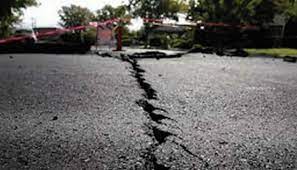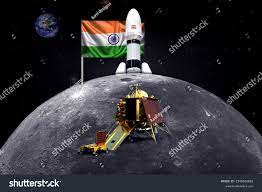"Chandrayaan-3: India's Third Lunar Mission Set for Launch in July 2023"
Chandrayaan-3, India's third lunar mission, is scheduled to be launched between July 12 and 19, 2023, according to Indian Space Research Organisation (ISRO) Chairman S Somanath. Speaking at Kothavara St Xavier's College in Kottayam district, Somanath announced that the final preparations for the mission are underway, with the spacecraft already positioned at the launch pad in Satish Dhawan Space Centre, Sriharikota. The rocket to be used for the launch is the LVM-3, and its assembly is currently in progress, with all the necessary parts having arrived at Sriharikota.
To ensure a successful launch, various improvements and modifications have been made to Chandrayaan-3's hardware, structure, computers, software, and sensors. Notable enhancements include the addition of extra fuel, further strengthening of the landing legs, installation of larger solar panels for increased energy production, and the incorporation of an additional sensor. Additionally, a 'Laser Doppler Velocimeter' instrument, developed last year, has been included to measure the spacecraft's speed. The mission's algorithm has been updated, and new software has been introduced to enable Chandrayaan-3 to land in an alternate location in the event of a failure at the scheduled landing site.
Chandrayaan-3 aims to demonstrate India's capability for a safe landing and rover exploration on the lunar surface, serving as a continuation of the Chandrayaan-2 mission. The mission objectives encompass three key areas: showcasing a secure and gentle landing on the moon, conducting rover-based exploration, and carrying out in-situ scientific experiments. The propulsion module will transport the lander and rover configuration to a lunar orbit of 100 kilometers. Additionally, the propulsion module will carry the Spectro polarimetry of Habitable Planet (SHAPE) payload, enabling the study of spectral and polarimetric measurements of Earth from the lunar orbit. The designated launcher for Chandrayaan-3 is the GSLV-Mk3, which will place the integrated module in an Elliptic Parking Orbit (EPO) with dimensions of 170 x 36,500 kilometers.
Furthermore, S Somanath emphasized that the launch window between July 12 and 19 is crucial due to fuel considerations. If the launch were to be postponed beyond this window, it would result in significant fuel losses. However, he emphasized that the launch will only take place during this period if all the tests are successfully conducted. The ISRO team is working meticulously to ensure the readiness of the spacecraft and the rocket for a smooth mission.
The Chandrayaan-3 mission holds great significance as it aims to build upon the achievements of its predecessor, Chandrayaan-2. The previous mission, although it did not achieve a soft landing on the lunar surface, provided valuable insights and data that have been instrumental in making necessary improvements to Chandrayaan-3.
The enhanced hardware, structural modifications, upgraded computers, software, and sensors reflect the dedication of the ISRO team to rectify the shortcomings of the previous mission. By addressing these issues and incorporating advancements, the team aims to increase the chances of a successful landing and rover operation on the moon's surface.
One of the notable enhancements is the addition of extra fuel, which will enable the spacecraft to perform maneuvers and carry out its mission objectives effectively. The landing legs have been strengthened further to ensure stability during the landing process. To generate more power, larger solar panels have been installed, enabling the spacecraft to have a sustained energy supply for its operations on the lunar surface.
In terms of instrumentation, the inclusion of an additional sensor enhances the spacecraft's ability to gather data and perform scientific experiments. The newly incorporated 'Laser Doppler Velocimeter' instrument will accurately measure the spacecraft's speed, aiding in navigation and control during critical maneuvers.
To improve the mission's flexibility and resilience, the algorithm has been updated, and new software has been implemented. This will allow Chandrayaan-3 to adapt and adjust its landing coordinates in case of any unforeseen issues at the scheduled landing site, increasing the chances of a successful touchdown on an alternate area.
The Chandrayaan-3 mission objectives encompass three main goals: demonstrating a safe and soft landing on the lunar surface, showcasing rover mobility and exploration capabilities, and conducting in-situ scientific experiments. These objectives align with India's commitment to advancing its space exploration capabilities and contributing to the global scientific community's understanding of the Moon.
With the GSLV-Mk3 identified as the launcher for Chandrayaan-3, the integrated module will be placed in an Elliptic Parking Orbit (EPO) measuring 170 x 36,500 kilometers. This orbit will serve as a steppingstone for the spacecraft's journey towards the Moon, allowing for necessary trajectory adjustments before reaching the lunar vicinity.
The launch of Chandrayaan-3 is eagerly anticipated, as it represents India's continued pursuit of space exploration and its commitment to pushing the boundaries of scientific knowledge. The successful execution of this mission will contribute to India's growing reputation in the field of space research and pave the way for future ambitious endeavors.



Comments
Post a Comment